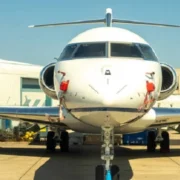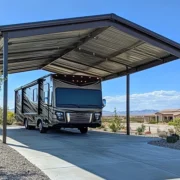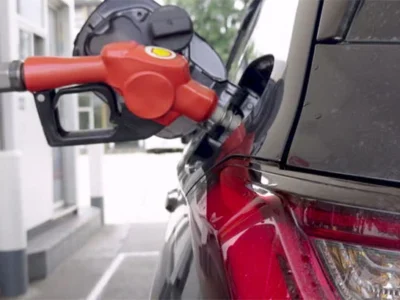Key Takeaways:
- Understand the importance of various crane types in construction projects.
- Discover tips for optimizing site efficiency with the right crane rentals.
- Learn about safety considerations and best practices.
Types of Cranes and Their Uses
Cranes are indispensable in the construction industry, playing a crucial role in the success of projects. Choosing the right type of crane can significantly impact project timelines and outcomes. With the right crane rental, you can ensure your construction projects proceed smoothly and efficiently. Common types include:
- Tower Cranes: Ideal for tall building construction. Their ability to reach impressive heights and lift heavy loads makes them essential for skyscrapers. These cranes are fixed to the ground and provide unmatched lifting power and stability, making them suitable for high-rise construction projects.
- Mobile Cranes: Versatile and can be transported easily to various locations. Perfect for short-term jobs requiring rapid setup and dismantling. They come in different configurations like truck-mounted and rough-terrain cranes, which allow them to be adapted to different environments and project demands.
- Overhead Cranes: Typically used in industrial environments for heavy lifting. These cranes run on elevated tracks and are often seen in factories and warehouses, moving large materials over short distances. Overhead cranes are particularly effective in assembly lines and bulk material handling.
- Crawler Cranes: Suitable for soft or uneven terrains due to their tracks. Their robust design makes them ideal for long-term projects in challenging conditions. Crawler cranes can move around a site with a heavy load, which provides flexibility when working on large-scale projects or in locations with rough terrain.
Factors to Consider When Choosing a Crane
Selecting the right crane involves several crucial factors:
- Load Capacity: Ensure the crane can handle the maximum load required by your project. Overloading a crane can be dangerous and lead to mechanical failure or even accidents.
- Height Requirements: It’s important to choose a crane that meets the height needs of your project. This includes considering the reach and maximum lift height to ensure that materials can be efficiently transported to the necessary elevation.
- Site Accessibility: Consider the terrain and access to the site. For example, a crawler crane may be most suitable if your site is located in a remote area with rough terrain. Conversely, a mobile crane would be ideal for urban environments with better road access.
- Duration of Use: Align the rental period with project phases to manage costs effectively. Short-term rentals might be more expensive daily, but they can save money if the crane is only needed briefly.
Tips for Enhancing Site Efficiency with Crane Rentals
Optimizing site efficiency with crane rentals can significantly reduce delays and save costs, ultimately enhancing the overall productivity of your construction project. To that end, here are a few strategies:
- Pre-Planning: Pre-planning is crucial in identifying your project’s exact needs and mitigating potential issues before they arise. Detailed planning ensures that you select the correct type and number of cranes, schedule their delivery and setup efficiently, and coordinate their operation smoothly.
- Regular Maintenance Checks: Ensure that your rented cranes undergo regular maintenance checks. Preventive maintenance helps avoid unexpected breakdowns, which can cause significant delays and increase costs. A small upfront investment in maintenance can save substantial resources in the long run.
- Skilled Operators: Hiring experienced crane operators is vital for maximizing operational efficiency. Skilled operators can perform tasks more swiftly and safely, reducing the likelihood of errors and accidents that could disrupt the workflow and cause costly damages.
Safety Considerations and Best Practices
When operating cranes, safety must always come first. Implementing robust safety practices not only protects workers but also enhances operational efficiency. Here are some key safety considerations:
- Regular Inspections: Conduct daily inspections to identify and address potential safety issues before they escalate. Checking for worn-out parts, ensuring all controls are functioning correctly, and verifying structural integrity are essential for maintaining safe operations.
- Adhere to Load Limits: Stay within the crane’s load capacity. Overloading can cause cranes to tip over or collapse, leading to severe accidents, property damage, and potential fatalities. Always follow the manufacturer’s guidelines and perform load calculations accurately.
- Proper Training: Ensure that all crane operators undergo rigorous training and certification. Proper training ensures operators are well-versed in crane operations, safety protocols, and emergency procedures, thereby minimizing risks associated with crane use.
Budgeting and Cost Analysis
Effective budgeting and cost analysis are key to managing construction projects successfully. Here are some strategies to optimize costs related to crane rentals:
- Compare Rental Options: Take the time to evaluate various rental companies. Comparing their rates, services, and customer reviews can help you find the best deal without compromising quality and reliability. A well-researched decision can lead to substantial cost savings.
- Analyze Project Timeline: Align the rental duration with the different phases of your project. Renting a crane for the exact needed periods can avoid unnecessary rental costs. Flexibility in extending or shortening the rental period based on project progress can also help manage expenses better.
- Utilize Technology: Employ construction management software to track expenses and optimize resource allocation. Such technology can provide real-time insights into resource usage, operational efficiency, and cost overruns, allowing for timely adjustments and informed decision-making.
Land Clearing Business: Turning Over a New Leaf in Sustainability














Comments